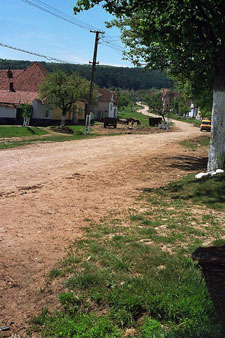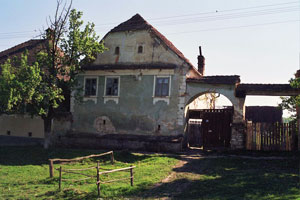 |  |

 |
As far back as 1623, the Saxons had written into their governing rules that, even after a fight with your neighbor, you were obliged to cook at his wedding. Throughout history, the Saxons understood that they needed their neighbors and a strong sense of community to survive. Arrival in the RegionThe Saxons in Transylvania are descended from Germans who arrived there during the 12th and 13th centuries, invited by the Hungarian Kings to colonize the area to increase the population and bring strength and protection to the region. They brought with them from Germany a relatively advanced civilization, with strong skills in farming, crafts and trades, all of which facilitated the success of their settlements. Because the area was often under threat of attack from the Ottomans and Tatars, especially in the Middle Ages, the Saxons built well fortified towns and also villages centered around fortified churches for protection from these attacks.  ViscriViscri is first mentioned in written documents in the 1400's but is thought to have been settled in the 12th century, at the site of a small chapel, which eventually grew into the fortified church that stands today. Like many of the villages in the region, it has survived with its traditional layout and architecture intact. Saxon villages were usually situated along a main road, which may have had one or two offshoot roads. A traditional Saxon house is entered through a large front gate, which opens onto a long courtyard. The courtyard runs the length of the house and beyond, ending at a barn. Beyond the barn is an orchard and, beyond that, meadows. Inside, the houses were relatively small, and usually decorated with traditional handicrafts.  Modern TimesBecause they were a skilled and organized people, the Saxons managed to remain relatively autonomous up until the 20th century. Their strong abilities as tradesmen, in the light manufacture of handicrafts, as farmers and as merchants provided them with the means to be self-sufficient economically and politically. The period after World War II, however, saw many Saxons sent off to work in labor camps in the former Soviet Union, which led to the first major exodus of Saxons back to Germany. The second great exodus occurred after the fall of Communism in 1989, spurred by years of oppression and mistreatment under Ceaucesceau's regime, not to mention the loss of their property through collectivisation plans. TodayViscri became a UNESCO World Hertiage site in 1993. The threat of Systemization, in which Ceaucesceau wanted to bulldoze thousands of villages and move people to urban/industrial centers in the effort of "progress" never came to fruition, but it served as a warning call to those living outside of Romania, that something needed to be done to preserve these unique villages. The sense of Saxon heritage and culture that remains in the village is strong, even though of the village's population of roughly 450 people, only 30 are of Saxon descent. |